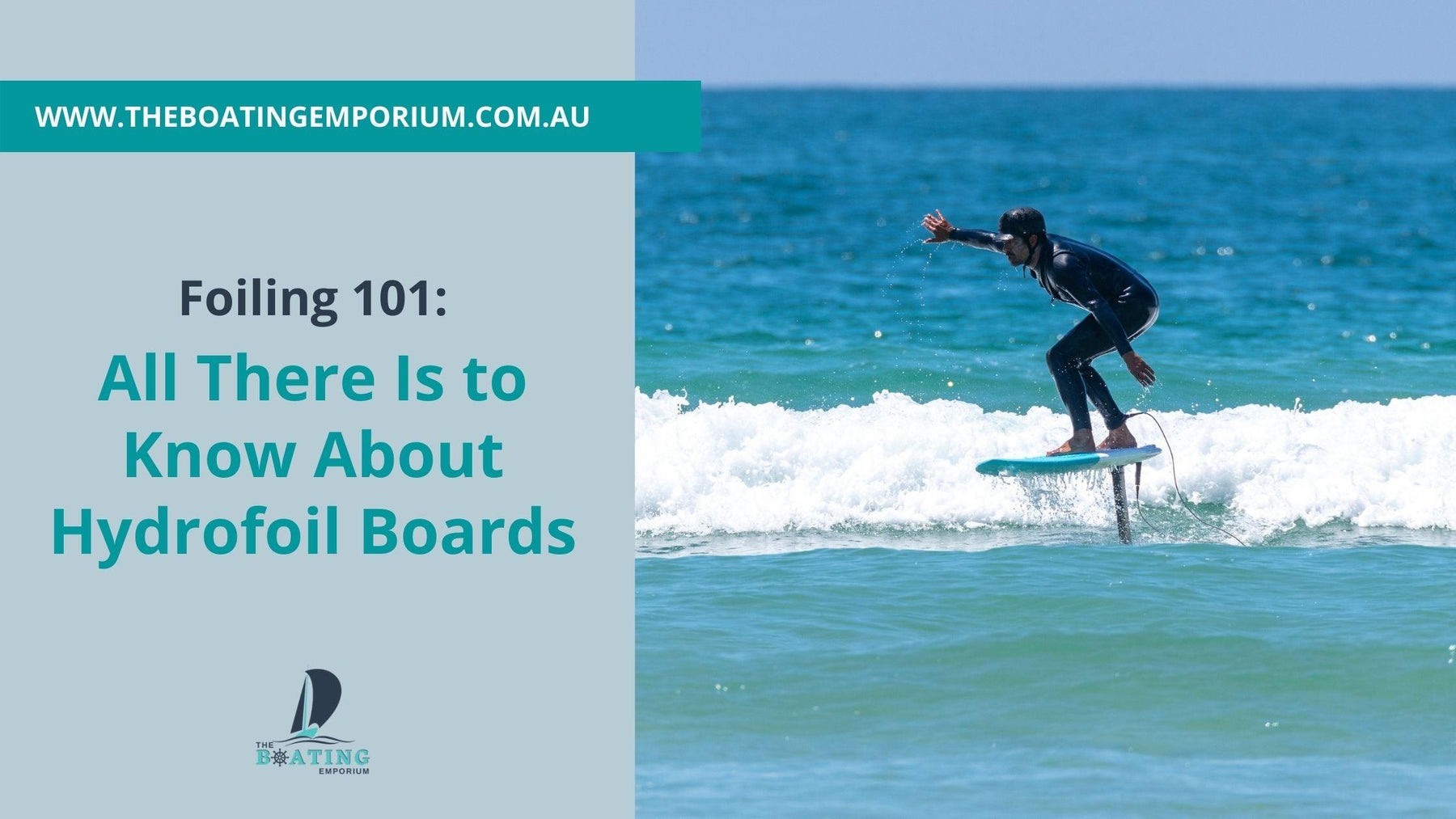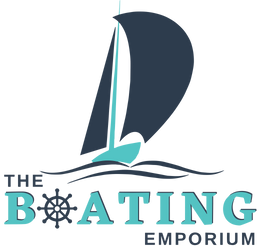PLEASE EMAIL OR BEGIN A LIVE CHAT

Foiling 101: All There Is to Know About Hydrofoil Boards
When listing down fun things to do at the beach, a lot of things come into mind. Building sand castles, playing beach volley, surfing the waves—these and the many fun water sports are activities a lot of us look forward to. But, did you know that you can make you beach trip even more exciting? That’s right! With a hydrofoil board in tow, you can upgrade your water adventures to a whole new level!

Just when you thought that nothing would beat the rush of riding the waves, “foiling” comes along. But what is it? And how do foil boards amp your surfing experience? We’ll find more about that in this article!
Hydrofoil Boards Defined
If this is the first time you’re hearing about foil boards, then you might have a question or two. Believe us, we did too. But the more we learned about these wonderful hydrofoil boards, the more we got excited!
By definition, a foil board is a variation of the surfboard that lets you “fly” above waters. It is designed with a hydrofoil that extends below the board into the water. This design then causes the board to be lifted off the water surface, thus giving you the impression of “flying”.
Foil boards also have “wings” connected to a pole under the surfboard.
The first “paddle-in” or “prone” hydrofoil was built and ridden by Australian inventor, Brett Curtis, in 2009. In 2013, he posted photos of his friend riding the foil board on various surfing forums. It was 3 years later when surfing through hydrofoils gained traction, and it hasn’t been the same ever since.
By the end of 2018, Takuma Concepts announced their first ever e-foil board, the E-TAKUMA. This concept was a modular system where different components of the board can be used without the use of battery and motor.

12 years after its invention, more and more hydrofoil board manufacturers rose. These days, hydrofoil surfboards are one of the best-selling water sports equipment. Foiling has grown so much, that foil boards can be spotted in beaches all over the world. People use them for surfing, kiteboarding, and even for sailing.
Hydrofoil boards, electric and not, are especially popular in places surrounded by beaches, like Gold Coast in Australia or Florida in the U.S.
How Hydrofoil Boards Work
A hydrofoil surfboard is probably one of the most complex water sports equipment when it comes to how they work. Several scientific laws and theories apply as to how the board is able to stand above water without touching it. In this part, we will try to break down the components of hydrofoil boards that make them work the way they do.
- Design - design-wise, foil boards look similar to surfboards. Hydrofoil boards, however, are smaller and slightly more difficult to operate since one has to control his height with his body weight. It is basically a surfboard with a hydrofoil attached underneath. A hydrofoil is the long fin-like object that goes a few feet off the bottom of the board. At the end of that fin, you will find an airplane-like attachment. When this hydrofoil is attached to a board powered by a battery and a motor, that is when you have an electric hydrofoil board, or these days most commonly known as e-foil boards.
- Physics - the basic principle is this: the foil board sails through the water at an upward angle which causes water to accelerate downward. This is where Newton’s third law, (formally stated as “For every action, there is an equal and opposite reaction”) comes in. The action is water accelerating downward, and it reacts by creating an upward force that lifts the foil board out of the water.
- Materials - Some hydrofoil boards are equipped with a carbon fibre hull, but other manufacturers offer inflatable boards as well. Inflatable foils are generally easier to transport and manage. They can also be easier to ride on water surfaces since they have more volume. However, inflatable boards may have more resistance on the surface, making it less smooth when the rider goes up and down.
- Specifications – Hydrofoil boards usually weigh a total of 30KG- 40KG, including the board itself and the battery. Some electric hydrofoil boards for sale last around 60 minutes when used to fly. Others, however, may have a flying time of 70-90 minutes. Most e-foil boards also operate on an average speed of 20 km/hour. Depending on battery life, some have a top speed of up to 50 km/hour.
Now that we know how hydrofoil boards work, let’s find out how to ride them, shall we?
How to Ride a Hydrofoil Board
When surfing, you would need to wait for the waves to enjoy it fully. But that’s not the case for hydrofoil surfboards! Since hydrofoils can be used in all types and capacities out on the water, one can easily enjoy gliding over any lakes or beaches aboard their foil board.
You have probably gathered that to be able to stand up on a foil board, you would have to be actually moving. But one advantage is that you don’t need a lot of speed to get the board going. This is because once you stand up on the wave, you can simply pump the board up and down, allowing you to create your own speed. This motion lets you enjoy foiling twice as long as you can ride a surfboard. This only explains why people who ride foil boards are able to enjoy riding the waves long before someone on a traditional surf board is able to catch one.
Now, how do ride a hydrofoil board? If you are a newbie, it is always a good idea to find an expert to teach you. But if you are confident enough, then you can simply follow this guide!
Step 1: Make sure that you are well-protected! Before attempting getting on a foil board, you have to wear a vest and a helmet. This is because it might take you a few falls and crashes until you are fully master the activity. Some people might get the hang of in as short as 15 minutes, but others may take longer than that. Either way, there’s nothing wrong about gearing up!
Step 2: If you are using an electric hydrofoil board, set the power to level 1. If you are a beginner, the lower the better. You can adjust to a higher level once you get the hang of it! You can use a Bluetooth remote control that comes with the e-foil board when setting the power level.
Step 3: Get on your stomach, as if lying on a boogie board. This is when the board will start accelerating. Once you notice that the board is going up, you have to move your weight forward. You can pull your weight forward with your hands after the board accelerates.
Step 4: Remember to keep sufficient speed. When you go too fast or too slow, the board will become unstable. Keep your initial speed at a level you can control to enjoy a stable ride, and so that you can stand on the board easier.
Step 5: Get a feel of the foil board first. You can go a few laps around while lying on your belly, just to get yourself accustomed to the board and using the remote control in case you’re riding an e-foil board. Once you’re comfortable, you can get on your knees and go for a few more laps just to be safe.
Step 6: Get up on both feet! After getting accustomed to the board and how it works, you can now slowly get on your feet. Remember the proper foot position once you stand up. Your front foot should be the same height as your knees before (chest-height), and your rear foot should be offset laterally to the back. Once you find a comfortable foot position, you can go a few more laps before your first flight.

Step 7: Prepare for your first flight. Once you have made sure that you are comfortable with your position, you can now start flying slowly and surely. For this step, you would need enough speed. You can control your speed with the remote control or throttle (for e-foils). Once you have sufficient speed, you can move your feet backwards and your body forward, so that the center of gravity stays the same. Move the gravity backwards for the foil board to lift off. You can fly for a few seconds on the first few minutes, but flying time will increase once you master it!
Some reminders:
- If you feel like the board is unstable, jump away from the board. You must never jump forward. You can only jump sidewards or backwards.
- Before your first flight, you must learn how to control your throttle/remote control first. You can do this when you’re lying down or when you are on your knees. You can practice by cruising and making turns on the surface.
- For electric foil boards, your throttle controls your speed, but your flying height is controlled by your weight. You can find a position where you lean forward while riding the surface, and stand normally once you start flying.
Foiling can be a lot of fun! It is a more relaxing way of surfing, and it definitely gives a new kind of rush! Once you have mastered these steps, you can now enjoy flying on the waters like you have never done before!
Hydrofoil Boards For Sale in Australia
Convinced enough to ride you own hydrofoil board? You must now be wondering where you can get one for yourself! No worries, because there are many online and physical water sports equipment stores with hydrofoil boards for sale. In Australia alone, foiling has been riding the waves (literally) for years. The Boating Emporium is one of the trusted distributors that showcase some of the best hydrofoil boards in the market.

With customer satisfaction in mind, we have curated foil boards from brands like Takuma Concepts and Pegasus! These boards will definitely bring out the water sports enthusiast in you. Whether you want to use it for leisure or professional purposes, our hydrofoil boards got you covered!
Want to know more? You can explore our collection of electric hydrofoil boards here. In case you are interested in other electric rides, just visit our website at www.theboatingemporium.com.au or contact us at our toll-free number. Our friendly staff will be happy to assist you!